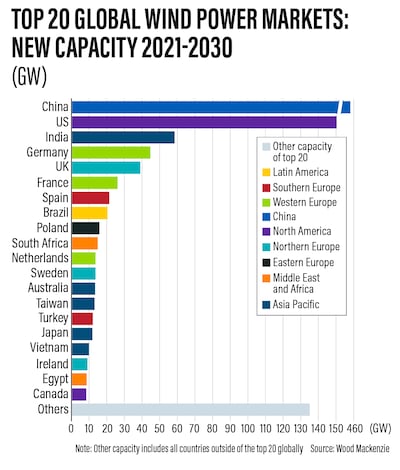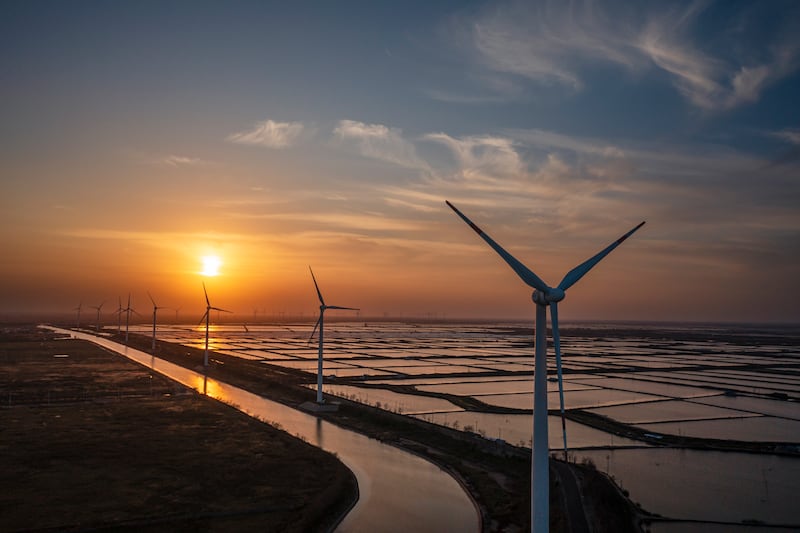Global wind power capacity is expected to grow 9 per cent a year between 2021 and 2030 as countries boost their renewable energy projects to cut emissions.
The total wind power capacity by the end of the decade is expected to reach 1,756 gigawatts, with China adding the most in new capacity, according to the latest forecast by Wood Mackenzie.
The UK-based consultancy reported a 69-gigawatt increase in new wind capacity additions globally in its fourth-quarter forecast compared to the previous outlook.
“Rapid growth in power demand driven by China’s industrial sector and the recent power shortage in September sparked China’s determination to accelerate the development of renewable energy,” Wood Mackenzie research director Luke Lewandowski said.
“The market is expected to add 458 gigawatts this decade and will continue to lead the global rankings in terms of new capacity added.”
China, currently the world's biggest emitter of greenhouse gases, plans to ensure its carbon dioxide emissions peak by 2030 and has vowed to become carbon-neutral before 2060.
As part of Beijing's efforts to decarbonise, it plans to raise the share of non-fossil fuels in its primary energy mix to 25 per cent by 2030, according to the International Renewable Energy Agency.
China is also planning to boost its offshore wind projects due to acute demand for power along the country’s coastline. This strategy will drive additional offshore wind capacity growth in the coming years, Wood Mackenzie said.
The US was ranked second to China in terms of new capacity additions this decade, with 150 gigawatts of new capacity set to be added, followed by India, Germany, the UK and France.

Wood Mackenzie has made minimal adjustments in the quarter-on-quarter outlook for the Middle East and Africa despite the advancement of wind projects in South Africa, Oman, Israel and Egypt, it said on Wednesday.
The UAE, the Arab world's second largest economy, aims to become carbon neutral by 2050 and plans to invest Dh600 billion ($163.5bn) in clean and renewable energy sources in the next three decades. Saudi Arabia aims to reach the target by 2060.
Japan, Asia’s second-largest economy, dropped five positions down to 16th position in the top markets for new wind capacity rankings while Vietnam was ranked 17th due to a 33-fold jump in new capacity additions in the past 12 months, according to Wood Mackenzie.
The world's wind project pipeline increased significantly between the second and fourth quarters of this year as efforts to mitigate climate change continued to drive the adoption of renewables, Fitch Solutions said in a separate report earlier this month.
The pipeline of wind projects rose sharply to 423 gigawatts currently, from 320 gigawatts in the second quarter, with Europe having the highest volume of capacity at 190 gigawatts.







